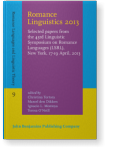French loanwords in Korean
Modeling lexical knowledge in OT
Haike Jacobs | Radboud University, Department of Romance languages and cultures
This paper discusses the Korean adaptation of French word-final coronal plosives. They are adapted, just as the English ones, with or without vowel insertion. In the latter case they are treated as ending in underlying /s/. Replacement of word-final coronal plosives by underlying /s/ is also active in the native phonology. We will critically discuss a number of previous proposals and argue that they are unable to describe the two aspects in a uniform way. We propose to model frequency and lexical knowledge in the form of a markedness hierarchy which accounts for both loanword adaptation of final coronal plosives as underlying /s/ and for the analogical pressure within the native phonology.
